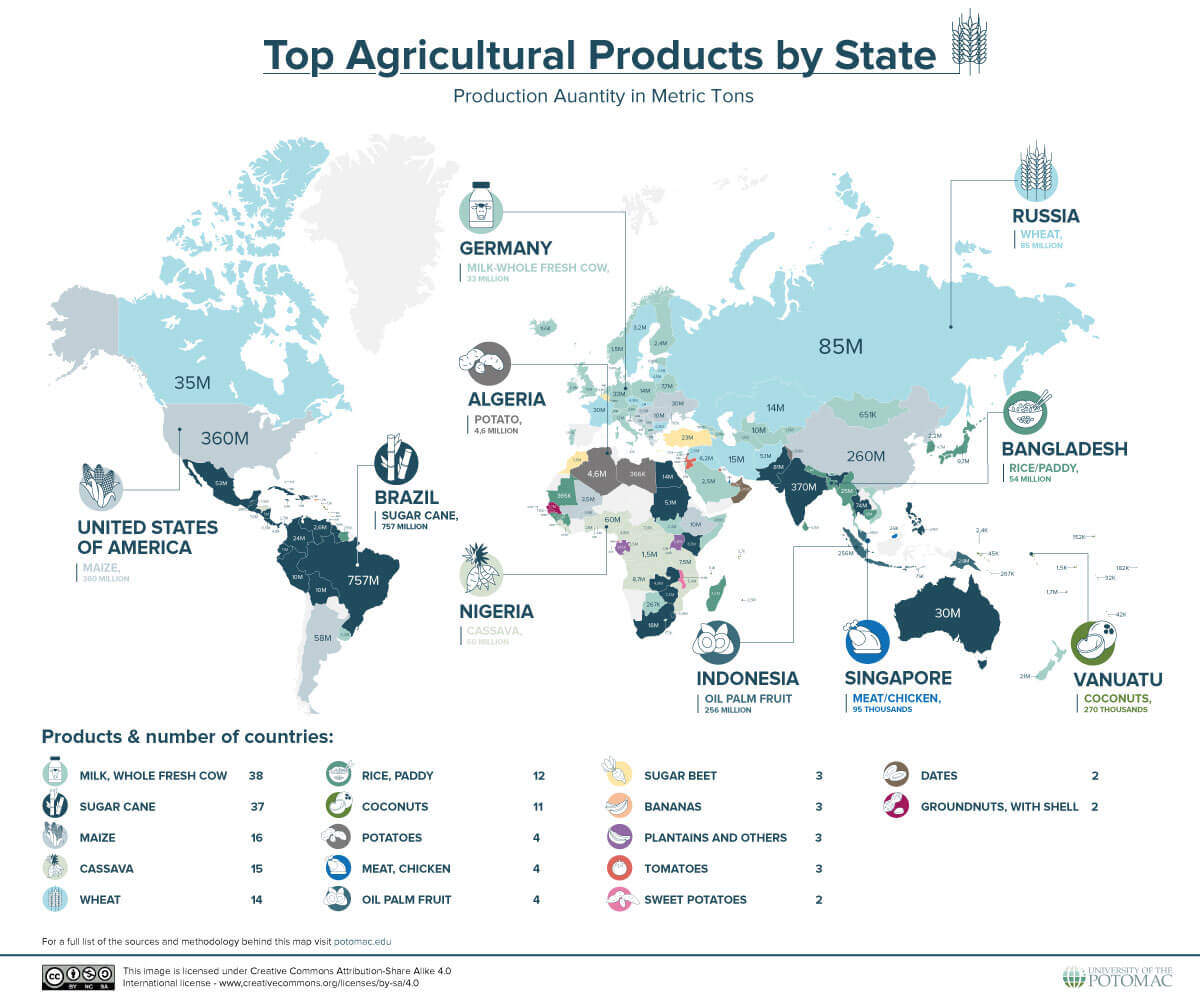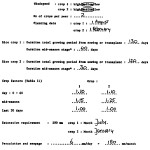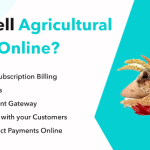Are you ready to take your agricultural business to the global stage? Exporting your products can open doors to new markets and significantly boost your profits.
But where do you start? Navigating the world of international trade can seem overwhelming, especially with the maze of regulations, paperwork, and logistics involved. In this guide, you’ll discover practical steps to successfully export agricultural products from your country. Imagine your products reaching new customers around the world, generating more revenue, and enhancing your brand’s reputation.
Intrigued? Keep reading to unlock the secrets of exporting success and transform your agricultural venture.

Market Research
Exporting agricultural products requires understanding market demand and regulations. Identify target markets and adapt to their standards. Research logistics, tariffs, and distribution channels to ensure smooth operations.
Exporting agricultural products can open new doors for your business. But before you dive in, market research is crucial. It helps you understand the global demand for your products and identify the best markets to target. Without solid research, you might end up investing time and resources in the wrong places.Understand The Demand
Start by identifying which countries have a high demand for your products. Look at import data and trends. Use online tools and databases that provide insights into agricultural imports. Knowing where your products are needed can save you a lot of hassle.Analyze Competitors
Who else is exporting similar products? Understand their strategies and pricing. Check out their strengths and weaknesses. Learning from others can give you a competitive edge and help you avoid common pitfalls.Identify Potential Challenges
Every market has its challenges. Tariffs, regulations, and cultural differences can affect your export strategy. What hurdles might you face in your target markets? Prepare by researching these issues thoroughly to minimize risks.Consider Local Preferences
Not all markets are the same. What do consumers in your target countries prefer? Adjusting your products to meet local tastes can greatly increase your success rate. Sometimes, a small tweak can make your product irresistible.Leverage Technology
Use digital tools to gather data efficiently. There are many platforms that offer insights into market trends and consumer behavior. Technology can simplify the research process and provide more accurate results.Engage With Experts
Consult with trade experts and local professionals. They can provide valuable insights and guidance. Have you ever thought about joining international trade associations? They often have resources and contacts that can be incredibly helpful.Reflect On Your Goals
What do you hope to achieve by exporting? Be clear about your objectives. Do you want to expand your brand globally or increase revenue? Your goals will shape your market research and overall strategy. Market research is your roadmap to successful exporting. It helps you pinpoint where your efforts will yield the best results. Have you ever considered how much time and money you could save with detailed research? It’s an investment that pays off in the long run.
Regulatory Compliance
Understanding regulatory compliance is crucial for exporting agricultural products. Each country has its own rules and standards. These regulations ensure the safety and quality of products. Failing to comply can lead to fines and bans. Exporters must familiarize themselves with the legal requirements. This helps maintain smooth operations and good market reputation.
Understanding Export Licenses
Export licenses are essential for legal trade activities. They confirm that your products meet all export laws. Authorities issue these licenses after verifying the product’s origin and quality. Obtaining a license may require specific documents. These include product descriptions and quality certificates. Always check the requirements in your country before applying.
Adhering To Quality Standards
Quality standards ensure products are safe for consumption. They often include guidelines on pesticide use and packaging. Meeting these standards builds trust with buyers. It also opens doors to more international markets. Regular quality checks help maintain product standards.
Customs Documentation
Proper customs documentation is vital for exporting goods. These documents facilitate legal clearance at borders. Common documents include invoices, packing lists, and certificates of origin. Accurate information helps avoid shipment delays. Ensure all documents are complete and up-to-date.
Compliance With Health And Safety Regulations
Health and safety regulations protect consumers and the environment. These rules cover areas like food hygiene and pest control. Exporters must follow these guidelines strictly. Compliance ensures products are safe and sustainable. Always keep updated with changes in these regulations.
Engaging With Regulatory Authorities
Communication with regulatory authorities is important. They provide guidance and assistance in the export process. Building good relationships can ease regulatory challenges. Authorities can also offer updates on new compliance rules. Regular engagement helps in smooth business operations.
Logistics And Distribution
Efficient logistics and distribution are key for exporting agricultural products. They ensure products reach international markets on time and in good condition. The process involves several steps and requires careful planning. Understanding the logistics chain is crucial for success.
Understanding The Supply Chain
The supply chain begins with the production of agricultural goods. Farmers harvest crops, which are then prepared for transport. From the farm, products move to packing facilities. Here, they are sorted and packaged for shipment.
Next, products are transported to warehouses. These facilities store goods before they move to ports or airports. Each step requires coordination and communication. Any delay can affect the entire process.
Choosing The Right Transport Method
Transport method depends on the type of agricultural product. Perishable goods often require faster transport, like air freight. Non-perishable items may travel by sea or land. Each method has its own costs and timelines.
Consider the destination country and its import regulations. Some countries have strict rules about how goods are transported. Ensuring compliance avoids delays and potential fines.
Navigating Customs And Regulations
Customs regulations vary by country and product type. Exporters must understand these rules to avoid issues. Documentation is crucial for smooth customs clearance. Required documents might include invoices, certificates, and permits.
Hiring a customs broker can simplify the process. Brokers are experts in navigating regulations and paperwork. They help ensure that shipments clear customs efficiently.
Tracking And Monitoring Shipments
Real-time tracking of shipments is essential. It allows exporters to monitor the location and condition of goods. Many logistics companies offer tracking services. These services provide updates on the shipment’s status.
Monitoring shipments helps identify potential issues early. Addressing problems quickly can prevent delays. It also ensures that products arrive in optimal condition.
Ensuring Product Quality During Transit
Maintaining quality during transit is crucial. Temperature control is often necessary for perishable goods. Proper packaging protects products from damage.
Inspect shipments before they leave and upon arrival. This ensures that any damage is identified and addressed. High-quality products build trust with international buyers.

Documentation And Payment
Exporting agricultural products requires careful attention to documentation and payment. Proper documentation ensures smooth customs clearance and compliance with international regulations. It also minimizes the risk of delays and penalties. Payment processes are crucial for maintaining cash flow and securing profits. Understanding these elements is essential for success in the global market.
Documentation For Exporting Agricultural Products
Export documentation serves as proof of compliance and legality. Key documents include the commercial invoice and packing list. These list the contents and value of the shipment. Other essential documents are the bill of lading and certificate of origin. They prove ownership and the product’s country of origin. A phytosanitary certificate is often required. It verifies the products are free from pests and diseases. Ensure all documents are accurate and complete.
Understanding Payment Terms
Choosing the right payment terms is vital. Common options are advance payment, letters of credit, and open account. Advance payment requires the buyer to pay before shipment. It’s the safest option for exporters. Letters of credit provide a secure middle ground. Banks guarantee payment upon meeting conditions. Open account terms are riskier. They allow buyers to pay after receiving goods.
Securing Payment
To secure payment, establish clear terms with your buyers. Use contracts to outline payment methods and timelines. Consider credit insurance to protect against non-payment. It offers security if buyers fail to pay. Monitoring payments and maintaining communication is key. Ensure all parties understand their obligations.
Conclusion
Exporting agricultural products can boost your business. Start by understanding regulations. Learn about necessary permits and documentation. Choose reliable shipping methods for your products. Build strong relationships with international buyers. Research market demands and trends. This helps in targeting the right audience.
Stay informed about global trade policies. They can affect your export activities. Stay adaptable to changes in the market. Focus on quality and customer satisfaction. These are crucial for long-term success. Use these steps to expand your market presence. Grow your business in the international arena.


